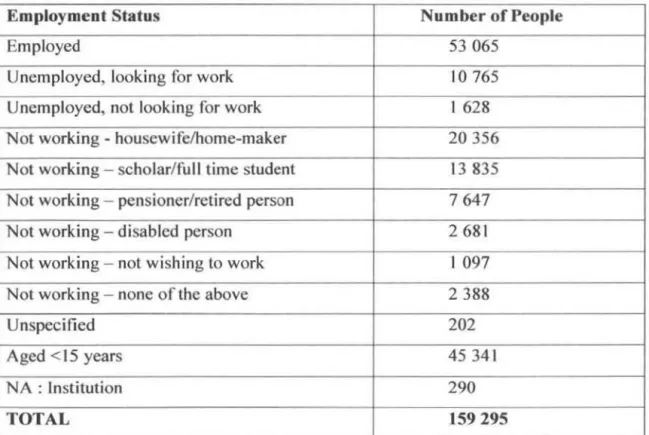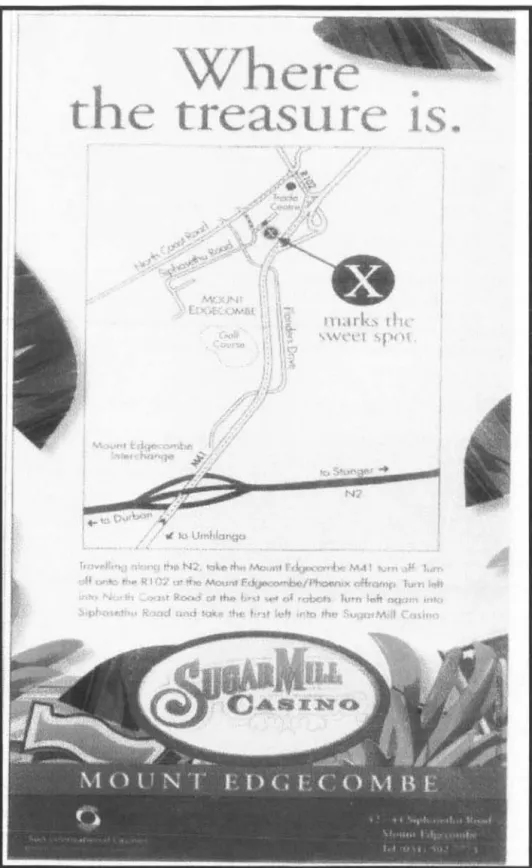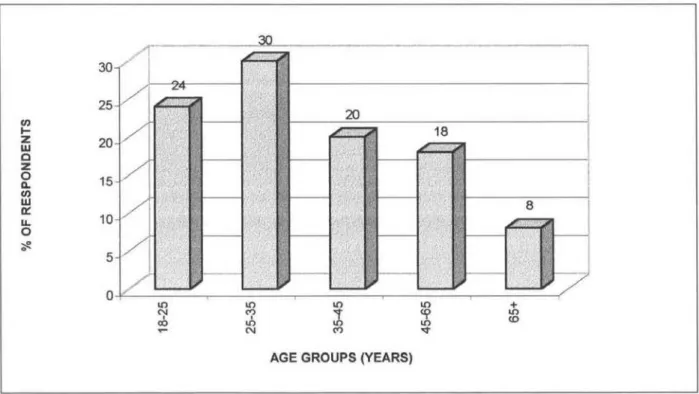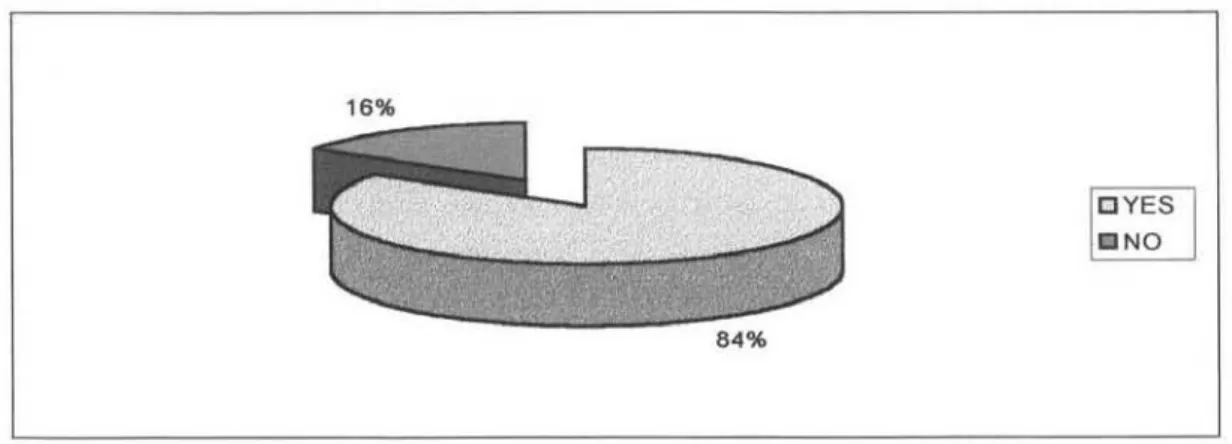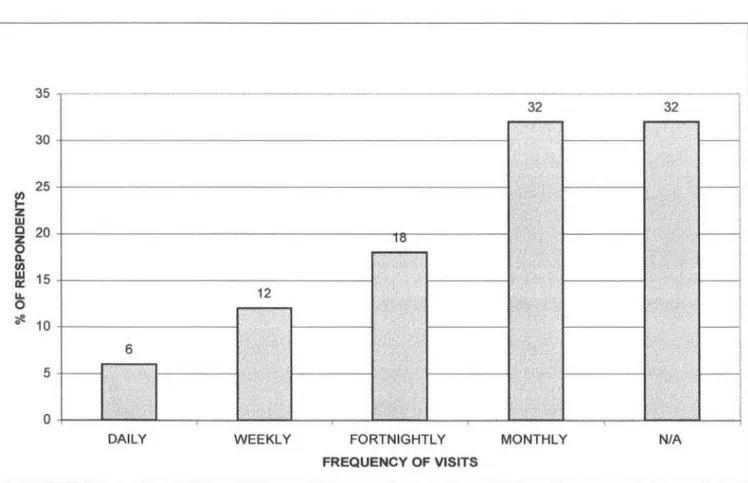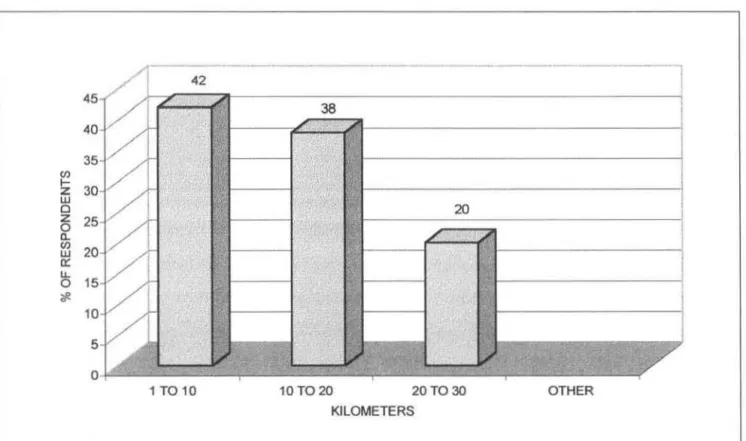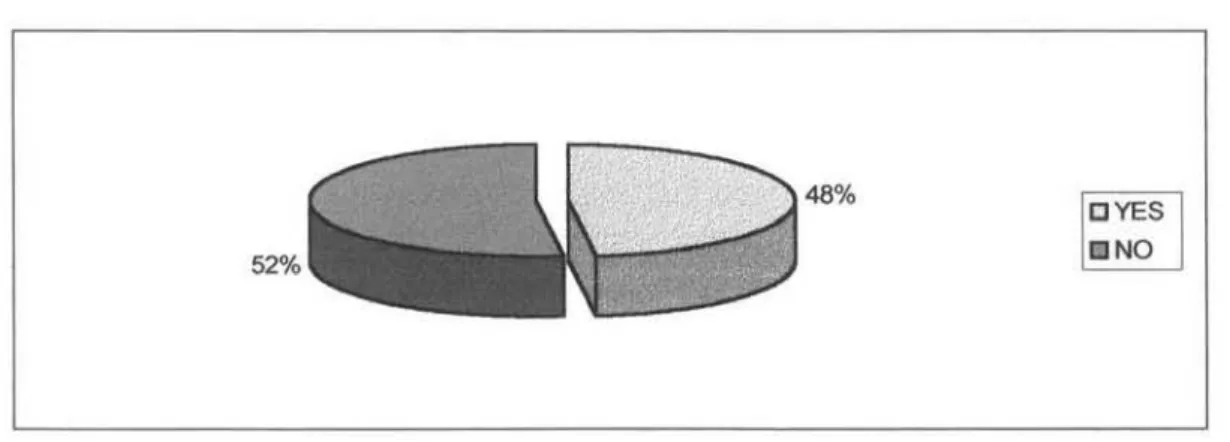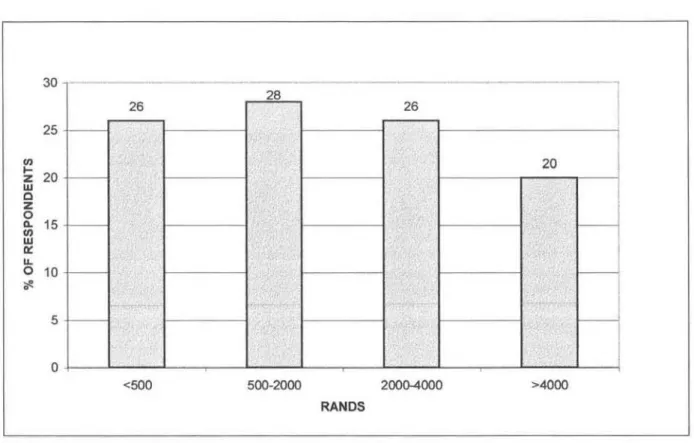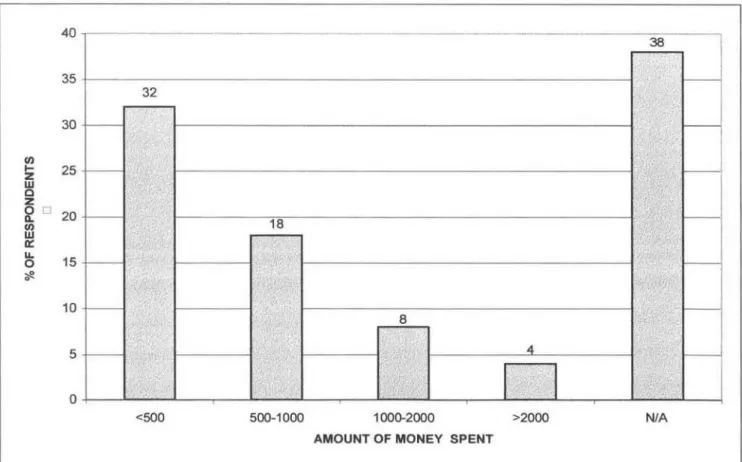by
RENELLE SINGH
Submitted in partial fulfilment of the academic requirements for the degree of
Master of Science in the
School of Life and Environmental Sciences, University of Natal
Durban
December 200 I
ABSTRACT
This thesis explores gambling as a leisure activity and consumption experience. Casino development in South Africa - formerly illegal in the country - is occurring at an unprecedented rate. In 1996. the new democratic Govemment passed legislation to allow up to forty casinos to be developed throughout South Africa. This was viewed as a means of developing tourism as well as the input of revenue into the country's economy. South Africa's gambling industry is now similar to that of the United Slales and Australia. Starting with remotely situated casinos, accessible primarily 10 upper income clientele, legislation has softened to allow for the licensing of casinos within the major urban areas of this country.
This has led to casino gambling being accessible to thousands of people, those who can afford to indulge in this leisure activity and those who cannot.
This thesis explores the engineering of space to create an atmosphere of compulsion, and the response of communities given access, for the first time, to casino gambling close to home.
The second legal casino in KwaZulu-Natal, the "SugarMill Casino", opened on 2 February 2001, on a temporary site in Mount Edgccombe, north of Durban, adjacent to the predominantly Indian suburb of Phoenix. Phoenix was planned and developed in 1976, as a residential area for the low-income Indian population. Therefore, the location of this casino has been subject 10 much criticism.
This study looks at the symbolic economy of the SugarMill casino in terms of the symbols used in marketing the casino as well as its architectural symbolism. The symbolic economy of the casino uses locally based 'cultural capital' to create a space of compulsion, through space planning and marketing campaigns. Although the casino has only being in operation for a short time, an im portanl aim of this thesis is to detennine whether these strategies are working and why. The perceptions and attitudes of Phoenix residents towards the casino, their use of and expenditure at the facility as well as the creation of problem or compulsive gamblers are explored. The importance of gambling in relation to other leisure activities is also assessed.
The findings of this study suggest that the architectural theme and symbols as well as the marketing campaigns employed by the SugarMill casino have been successful in attracting gamblers to the casino because the majority of respondents have visited the casino and
gambled there. Whilst gambling is not the main leisure activity that respondents engage in, it is certainly a significant fonn of leisure since forty-eight percent of the sample cited gambling as their main leisure activity. Reasons ror this vary but contributing factors include the accessibility of the casino in close proximity to their homes as well as the general lack of a variety of recreational alternatives in Phoenix.
PREFACE
The research for this thesis was carried out in Durban, under the supervision of Dr. S. Brooks.
This thesis is my own work and has not been submitted in part, or in whole to any other tertiary institution. Where use has been made of the work of others it is duly acknowledged in the text.
It should be noted that certain journals were accessed online via the Internet. In such cases specific page numbers could not be cited.
ACKNOWLEDGEMENTS
My sincere thanks to the following people who have played an instrumental role In the completion of this thesis:
• My husband, Rithcsh, for his patience, invaluable assistance and insightful comments
• My parents, siblings and in-laws for their support
• Dr. Shirley Brooks, my supervisor, for her foresight and encouragement
• The Department of Tourism, Tcchnikon Natal, for providing the much needed time, resources and understanding
• Mrs. Magic Subban. senior lecturer at Tcchnikon Natal, for her advice and useful discussions.
Abstract Preface
Acknowledgements List of Figures
List of Tables
List of Appendices List of Plates
TABLE OF CONTENTS
CHAPTER ONE: INTRODUCTION
1.1 The Context of the Thesis 1.2
1.3
2.1 2.2 2.2.1 2.2.2 2.2.3 2.3 2.3.1 2.3.2 2.4 2.4.1 2.4.2 2.4.3
2.4.3.1 2.4.3.2 2.5
Aim and Objectives of the Study Structure of the Thesis
CHAI'TER TWO: LITERATURE REVIEW
Introduction
The Geography of Leisure and Recreation Leisure and Recreation in the Modem World A Typology of Leisure Activities
Casino Gambling as a Leisure Activity The Symbolic Economy of Leisure Spaces Symbolic Economy and Public Spaces
Spaces of Consumption and the Symbolic Economy of Casinos The Social Context of Casino Development
Development Ethics as Related to Casinos
Debating the Economic Benefits of Casino Development Outcomes of Compulsion: The Social Consequences of Casino Development for Poor and/or Small Communities
A Case Study of Indian Reservation Gaming in the United States Homelands and Casino Development in Southern Africa
Conclusion
"
IV V
ix
x xi xii
I
5 6
7
7 7 7 11 14 16 16 18 22 22 24
26 27 29 31
3.1 3.2 3.2.1 3.2.2 3.3 3.3.1 3.3.1.1 3.3.1.2 3.3.2 3.4 3.5 3.6 3.7
4.1 4.2 4.3 4.4 4.4.1 4.4.2 4.4.3 4.4.4 4.5 4.6
5.1 5.2 5.2.1
CHAPTER THREE: METHODOLOGY
Introduction Research Design
Discourse Analysis and the Study of Signs The Self-Administered Survey
Data Collection Primary Data
Collection of Data for Discourse Analysis Collection of Data for Questionnaire Survey
Secondary Data
Sampling Method for Questionnaire Survey Data Analysis
Limitations of the Study Conclusion
CHAPTER FOUR: BACKGROUND TO THE STUDY
Introduction
The New Context of Casino Development in South Africa Brief History of Sugar Fanning in KwaZulu-Natal
The Location oflhe Study: The Community of Phoenix
Geographical Location of Phoenix A Brief History of I>hoenix
Current Population Characteristics and Employment Profile General Spatial Characteristics of Phoenix
The SugarMill Casino, Mount Edgecombe Conclusion
CHAPTER FIYE: ANALYSIS OF DATA
Introduction
Analysis of the Symbolic Economy of the SugarMill Casino Architectural Symbolism and Theming at the SugarMil1 Casino
33
33 33 33 35 36 36 36 37 37 38 39 40 40
42
42 42 43 45 45 46 47 50 52 54
ss
55 55 56
5.2.2 5.3 5.3.1 5.3.2
5.3.2.1 5.3.2.2 5.3.2.3 5.3.3
5.3.3.1 5.3.3.2 5.3.3.3 5.3.4 5.3.4.1 5.3.4.2 5.3.4.3 5.4
6.1 6.2 6.3
The Sweet Tastc of Money - Marketing the SugarMil1 Casino Phoenix Residents Responses to the SugarMill Casino
Demographics of the Sample
Use oflhe Casino, Location Impacts and Gambling in Relation to other Leisure Activities
Use of the Casino
The Impact of Location: Too Close for Comfort?
Gambling in Relation to Other Leisure Activities Gambling Costs to the Community and the Availability of Support Structures
Monthly Income
Monthly Expenditure on Gambling
Availability of Gambling Support Structures in Phoenix
Views of the Phocnix Community Regarding the SugarMill Casino Attitudes Towards the Casino
Development or Exploitation?
Opportunities and Threats Posed by the Casino Conclusion
CHAPTER SIX: CONCLUSION
Conclusions from the Data Analysis Further Research Directions
Personal Reflections and Recommendations
REFERENCES
APPENDIX I: NEWSPAPER ARTICLE
APPENDIX 2: DEFINITIONS APPENDIX 3: QUESTIONNAIRE
65 73 74
75 75 77 79
82 82 84 85 88 88 92 94 97
98
98 101 102
105
113 114 115
LIST OF FIGURES
Figure 4.1: Plan Showing Phoenix Cadastral 48 Figure 4.2: Map Showing Directions to the SugarMill Casino 53 Figure 5.1: Age Ratio within Sample (Male and Female) 74 Figure 5.2: Percentage of Respondents who have visited the SugarMill Casino 75 Figure 5.3: Frequency of gambling at the SugarM ill Casino 76 Figure 5.4: Distance from Residence to the Casino 77 Figure 5.5: Percentage of Respondents Who Engage in Gambling as their
Main Leisure Activity
Figure 5.6: Monthly Income of Respondents Figure 5.7: Monthly Expenditure on Gambling
Figure 5.8: Awareness of Gambling Support Groups in Phoenix
Figure 5.9: Percentage of Respondents who would seck Professionall-lelp for Compulsive Gambling
79 83 84 85
87
LIST OF TABLES
Table 2.1: A Typology of Leisure Activities Table 4.1: Population Groups in Phoenix
Table 4.2: Employment Status of Phoenix Residents
Table 5.1 : Motivations for Gambling given by Respondents in relation to Cotte's (1997) Motivational Taxonomy of Gambling
12
49 49
89
Appendix I: Newspaper Anicle Appendix 2: Definitions
Appendix 3: Questionnaire
LIST OF APPENDICES
113 114 115
LIST OF PLATES
Plate 5.1: Entrance to the children's entertainment area at the SugarMil1
Casino 57
Plate 5.2: Electronic signboards depicting the SugarMill Casino's
various ofTerings 58
Plate 5.3: Monetary payouts available from the SugarMill Casino's
slot machines 58
Plate 5.4: Entrance of the 'CaneCutters' Restaurant 59 Plate 5.5: Example of a chandelier at the SugarMill Casino 60 Plate 5.6: Arrival of the indentured Indians in Natal (1860) 62 Plate 5.7: Indian cane cutters on a sugarcane plantation 63 Plate 5.8: Advertisement luring people to gamble 67 Plate 5.9: Advertisement using a 'word play' on the sugar mill concept 68 Plate 5.10: Advertisement informing the public of forthcom ing attractions 70 Plate 5.11 : Advertisement introducing the launch of I Qc slot machines 71
INTRODUCTION
1.1 Tbe Context of tbe Thesis
Gambling, in onc form or the other has been present in most cultures since ancient times and is widely pracliced at all levels of the social hierarchy in most countries. Having in the past imposed legislation that bans gambling, many countries have learned their lesson that such legislation is di fficult to enforce and only leads to illegal operations. By legalising gambling, authorities can ensure that the industry is properly regulated and controlled. The expansion of the gambling industry is ever increasing and this can be mainly attributed to the changing attitudes of society towards gambling from that of aversion to greater acceptance and the fact that gambling is an important component of an economy. Social costs cannot, however, be ignored.
In South Africa, prior to 1996, gambling in all its fonns (with the exception of horse racing) was illegal in South Africa (Wiehahn, 1995: I). However, post 1996, South Africa has been quick to join the ranks of international gambling countries. Once a provincial Gambling Board awarded a casino license, downscaling of the proposed casino development was not permitted, even if the market in the proposed area of development, dictated some sort of downscaling (The Independent on Saturday, 10/03/2001). Huge capital expenditures and mega developments - for example, in Gauteng, the multimillion Rand casinos 'Montecasino' and 'Caesar's Gautcng' -are evident in these initial stages in the development of the South African casino industry.
With a country like South Africa, which faces problems of poverty, the positive and negative impacts of gambling need to be assessed. The impact of gambling on the South African economy will presumably have positive impacts with regards to the generation of employment opportunities; it will be a source of lax revenue (income tax and gambling tax); much needed infrastructure while generating economic growth through investment.
However, with regard to the negative social impacts of gambling, very little research has been done in South Africa (Rule and Sibanyoni, 2000:9). It is hoped that, with further research on the social and economic impacts of gambling in South Africa, it is clearly incumbent upon the Government, represented by the national Gambling Board, to protect the public via the implementation of policy and from excesses associated with gambling, such as bankruptcy; disruptions to family life and nonnal economic activity; and psychological addiction (Kule and Sibanyoni, 2000: 118).
In the international literature, the development of casinos close to low-income areas has been met with much criticism. For example in a study by Crush and Wellings (1983:
687). it was found that casino development in Lcsotho and Swaziland in the early 1970's, had a negative impact on the local populations of these countries, mainly poor people, because they resorted to gambling as a means to get money at the expense of other basic needs. Of course, money was lost more often than gained. The development of casinos on Indian or native American Reservations in the United States of America, generally poor communities, has been a topic of much debate. Magnuson (1994), states that whilst some native Americans view casino development as a means of providing the economic independence they require, others view it as a spiritual cancer eating away at what is left of native American communities.
In KwaZulu-Natal, the rirst legal casino opened in Newcastle in October 1999, and the second legal casino, the temporary SugarMill casino, opened in Mount Edgecombe north of Durban in February 2001. The SugarMill casino, which is jointly owned, by Afrisun KwaZulu-Natal and Sun International is the casino under study in this thesis. A new pennancnt casino called 'Sibaya Resort and Entertainment World'. is expected to be built by late 2003. Temporary casinos are viewed as a stepping stone measure designed to fill the gap until pennanent facilities are established, in the meantime ensuring a cash flow to the province and to the casino operators.
The SugarMill casino is located very close to the predominantly low-income suburb of Phoenix. This has been one of the main reasons that has led to the choice of this study,
namely the issues raised by the development of a casino so close to a poor residential area. The aim is to reveal the manner in which this casino operates as a space of social compulsion. The theme and architectural symbolism of this casino was studied in order to explain the way in which these factors and the marketing of the casino creates a space of social compulsion. Phoenix residents' use of the casino as well as attitudes and perceptions towards the casino was obtained by means of a questionnaire and responses are also documented.
In the period immediately prior to the opening of the SugarMill casino, some concerned critics predicted that the violence. street crime. prostitution and drug abuse that is evident in Phoenix, would get worse, when thousands of residents would flock to the nearby casino in the hope of winning money. According to sociologist Ashwin Desai, the social implications of a casino being so close to Phoenix could be far-reaching as pensioners, the young and desperate people lose money rather than gaining it through gambling, and the already poverty stricken people of Phoenix find themselves poorer still (Sunday Tribune, 28 January 2001). Desai further stated that for many people in Phoenix, life is already a roulette wheel and the casino will serve only to double the odds, whilst the positive impacts of job creation could be rendered meaningless by the potentially devastating social consequences. This sentiment was supported by Professor Brij Maharaj, a University of Natal geographer, who argued that there had often been a tendency to over emphasise the economic benefits and underestimate the social costs associated with casinos (Sunday Tribune, 28 January 2001). Mount Edgecombe psychiatrist, Dr.Hemant Nowbath stated that the decision to locate the casino on the doorstep of Phoenix was short-sighted since pathological or problem gambling is a recognised impulse-control disorder and that the psychosocial consequences can be severe (Sunday Tribune, 28 January 2001). These opinions can be read in Appendix I.
On a personal note, the researcher has spent vacations at a number of casino resorts around South A frica. The euphoria of winning money at a casino cannot be compared to the despair and sense of hopelessness felt after losing money. something witnessed by the researcher when observing gamblers, on a number of occasions. Elderly men and women,
who undoubtedly have come to the casino with their mcager pension or disability grant, spend many long hours sitting, almost sleeping. on hard wooden benches sprawled around casinos, waiting for their transportation back home, after having lost their money to the slot machines and gaming tables. Young children are often left unattended at the childrens' amusement centres, whilst parents gamble. Besides gambling, men and women also tend to indulge in large amounts of alcohol and smoking, sometimes leading to rowdiness within the gaming area. While these are only some of the aspects observed by the researcher, they do suggest that the lure of money is extremely powerful. Unless people gamble responsibly. South Africa could soon become a nation of gamblers.
Concomitant with the high levels of poverty and unemployment in this country, this surely spells a recipe for disaster.
This study which focuses on the leisure activity of gambling and the engineering of space that crcates an artificial world, resulting in escapism from <reality' into a world of money spending, is essentially a geographic phenomenon, and there are a number of ways through which a geographical perspective can illuminate this study. The geographer's approach to tourism and leisure sheds light on the location of tourist areas, the movements of people created by tourism locales, the changes that tourism brings to the landscape in the fonn ofleisure and tourism facilities, dispersion of tourism development physical planning, and economic, social and cultural problems (Goeldner et al., 2000:23).
According to Williams (1998:17), the spatial distribution of tourist and leisure phenomena includes the spatial patterning of supply as well as locations at which a leisure activity can be pursued. In the case of the SugarMill casino, it is located close to a low-income residential area and the leisure activity of gambling can have a potentially llamaging effect un the community and therefore needs to be studied.
Geographers also have a legitimate interest in the resulting impacts of tourism and leisure activities since these exhibit variations across time and space. Impact studies have traditionally considered the relatively broad domains of environmental, economic, social and cultural impacts, each of which has a geographical dimension. It can therefore be argued that geographers need to be more active in exploring these issues (Williams,
1998: 17). I f we limit ourselves to conventional geographic concerns for spatial patterns of people, resource and tourism flows, wc gain only a partial view of what tourism and leisure is about. In gaining a more holistic view, Geography has the capacity to provide a synergistic framework for exploring more complex issues such as the nature of links between tourism and leisure development processes as well as their associated impacts, or the social, cultural and anthropological concerns for host-visitor relationships.
1.2 Aim and Objectives of the Study
The main aim of this study is to investigate how the SugarMill casino has been operating as a space of social compulsion for Phoenix residents, and to evaluate the degree of success in doing so in the short time since it has been open.
This aim is achieved through the following objectives, which were derived from a careful reading of the literature on gambling as a leisure activity, the symbolic economy of shopping malls and casinos as well as international examples on the development of casinos close to low-income areas. The objectives of the study are:
• To explore the symbolic economy of the SugarMill casino in terms of its marketing campaign and physical structure.
• To determine the frequency of use by Phoenix residents, and to assess the importance of gambling in relation to other leisure activities.
• To determine Phoenix residents' expenditure at the facility and the degree of support provided for those who become compulsive gamblers.
• To explore Phoenix residents' views regarding the casino's contribution to their community.
These objectives are essential in understanding the marketing strategies employed by the casino's owners as a means to attract people. It is necessary to assess the casino's importance as a leisure space to determine whether gambling is the main or a popular leisure activity engaged in. The objectives also help to determine the costs to the
community and whether these arc mitigated by any action on the part of the casino. and whether perceptions of exploitation dominate or do people view the casino as a space of development.
1.3 Structure of the Thesis
A brief overview of gambling as well as the rationale behind the choice of this study is argued in Chapter One. The research aim and objectives are also given. Chapter Two fannalises the various bodies of literature that wefe consulted. In this section, the development of leisure as an activity as well as the relationship between leisure and recreation is reviewed. The symbolic economy of leisure spaces, with particular relevance to casinos is discussed to provide an insight into the symbolism of casino design and architecture. The social and economic impacts of gambling are also assessed.
The chapter concludes with the use of international examples, to highlight the economic and social impacts of gambling on communities.
Chapter Three outlines the qualitative research methodology adopted in this study. The research design, data sources, sampling method and method of data analysis is discussed.
Limitations of the study are also explained. Chapter Four provides a background to the study. The background information discussed centers around the context of casino development in South Africa, a brief history of sugar cane farming in Natal, demographic and spatial infonnation regarding the community of Phoenix and general information about the SugarMill casino. Chapter Five reflects the analysis and interpretation of the data collected. First, data pertaining to the architectural symbolism, theming and rnarkl.::tillg of lhe SugarMill casino is analysed. Second, Phoenix residents' use of the casino as well as attitudes and perceptions towards the casino is also analysed.
Cbapter Six provides an overall discussion and conclusions of the research findings.
Recommendations based on these findings are also given. The resulting conclusions reflect the literature and theoretical underpinnings which have guided the entire thesis.
CHAPTER TWO
LITERATURE REVIEW
2. t Introduction
This chapter reviews the literature, which is fundamental in laying the groundwork for the study. The various bodies of literature consulted and discussed infonn the study and are essential in answering the research questions. Some key questions are: what arc the strategies employed by the SugarMill casino to attract people? Is the casino a space people like to use and is gambling an important leisure activity amongst Phoenix residents? What are the costs of gambling to the community and arc these mitigated by any action on the part of the casino? Do perceptions of exploitation dominate or do Phoenix residents view the casino as a space of development?
In this section. the development of leisure as an activity as well as the relationship between leisure and recreation is reviewed to highlight the leisure context of gambling. A typology of leisure activities is explained to provide an understanding of the nature of gambling as a leisure activity. The symbolic economy of leisure spaces, with particular relevance to casinos is discussed to provide an insight into the symbolism of casino design and architecture. The chapter concludes with the use of international examples, to show the economic and social impacts of gambling on communities.
2.2 The Geography of Leisure and Recreation
2.2.1 Leisure and Recreation in the Modern World
Leisure is not a phenomenon of recent modem times (Munne, 1992, in Juniu, 2000). It is therefore necessary to analyse the meaning and the relationship of work and leisure throughout history to understand its present fonn.
Leisure in the ancient Greek society was defined as the contemplation of the supreme values of the world: truth, goodness. beauty and knowledge (Juniu, 2000). This contcmplation demanded a life of leisure defined as 'skhole' (Munne, 1992, Juniu, 2000).
Skhole was not simply doing nothing, but was rather a slate of peace and creative contemplation in which the spirit is immersed. Leisure required having time for oneself, therefore not being subject to work. According to Juniu (2000), leisure was associated with the upper class and interpreted as absolving individuals from daily labour. freeing them to engage in intellectual, aesthetic and civic endeavours.
After the Roman conquest. ideas about leisure changed. In contrast to Greek times, leisure in Roman times did not signify a social status or a way of life, but a time after productive activities (Juniu, 2000). The Greek idea of leisure altered. becoming a tool to support work. Work was now an end in itself and leisure supported this end. Juniu (2000). explains that forms of mass leisure arose during this time through sports and games provided by the ruling class as a means of entertainment. Hence this view of leisure as a complement of work is a concept related to modem times.
During the Middle Ages. leisure time was not only time to rest and recreate but it became a social exhibition among the higher social strata. Juniu (2000) slates that in contrast to Greek philosophy, leisure in the Middle Ages was viewed as the abstinence from work and freedom to choose the activity in which to participate. In the late Middle Ages leisure began to transfonn into ostentation. luxury, pleasures and the squandering of wealth (Juniu,2000).
A major change occurred with the emergelll:e
ur
Protestantism in Europe. Juniu (2000).notes that during the 1700s the Puritans' work ethic was built on Luther's basic beliefs that work and family responsibility was service to God. The Puritans considered leisure as idleness and wasting time. This doctrine gave a religious value to work where idleness was viewed as a sin. This interpretation of leisure became part of the industrial society and still remains at present.
The onset of the industrial revolution brought about increases in work time, since the main goal was to increase production. In Europe and North America, the increasing exploitation of the worker led to a worker movement which demanded fewer work hours and more pay. By the late nineteenth century, employers had to concede a leisure period extracted from the decreased work time. This was referred to as spare time or disposable time (Juniu, 2000).
Historically leisure had a clear meaning. In Greece, Rome, Medieval times and the Puritan times, this meaning conditioned the use of leisure time. The essential clement in each case was social life. Hence, according to Juniu (2000), modem leisure IS
subordinated to work and should not interfere with work. Modem leisure time IS
subjected by the work conditions and it constitutes a potential source or consumption This is supported by I-Iemingway (1996), who argues that leisure has been distorted to meet the demands or increasing commodification and consumerisation. This implies that the historical sense or rreedom in leisure has been lost to consumerisation and that leisure is no longer viewed as a time ror personal growth and contemplation.
Hemingway (1996) notes that the increasing instrumental ism of leisure as a reflection of modernisation has produced 'culture consuming' instead of 'culture creating' fonns of leisure. Culture is now the commodity and leisure is the act of consuming it. Leisure was viewed as 'culture creating' and it had to have an element of communication and interaction among individuals, whilst free time, 'culture consuming' leisure, was a means to an end, making use of subjects and objects (Hemingway. 1996). Thus according to Juniu (2000), today, we are in a sense trapped by money and consumerism and those elements of creativity and sociability found in It:isure are disappearing.
A number of definitions of modem day leisure exist. According to Roberts (1978:3):
"situations defined as leisure are characterised by the participants' ability to detennine their own behaviour and environments, and by the 'friendly' quality of the social relationships that are encountered". Roberts further suggests that we can group the various definitions of leisure under two headings. The first definition is that of leisure as
part of a way of life, which would include the use of lime, and the second as a type of activity characterized by something called 'play' or recreation. According to Shaw and Williams (1994:3), most definitions of leisure are based on time, activity and experience.
Kelly, 1982, in Shaw and Williams (1994:5), states that leisure is defined by the use of time. It is distinguished by the meaning of the activity and not its fonn. Walking may be an important leisure activity for some, but may be abhorred by others, especially those who have no choice but 10 walk. This implies that leisure activities are those freely entered into and which yield personal satisfaction. However, Shaw and Williams (1994:5) state that this notion can be misleading, for there are socially constructed boundaries to individual choices, based on social position, expectations and socialization.
Featherstone (1987:115), states: "The significance and meaning of a particular set of leisure choices ... can only be made intelligible by inscribing them on a map of the class- defined social field of leisure and lifestyle practices in which their meaning and significance is relalionally defined with reference to structured oppositions and differences", Hence. it is the perception of activities by individuals which is important, for leisure is rooted in enjoyment, well being and personal satisfaction (Shaw and Williams, 1994:5).
Recreation is an important concept here. The way in which leisure time is utilized and the related modes of behaviour entered into. are referred to in the literature as recreational activities. Goeldner et al.. (2000:21). define recreation as, "The action and activities of people engaging in constructive and personally pleasurable use of leisure time", These activities include sport, pleasure travel, cultural functions, natural and human history appreciation, non-fonnal education, gambling and sightseeing. The motivation in recreational activities is primary hedonistic qualities of sensory enjoyment, as opposed to duty-bound obligations,
In summary, leisure in the modem world has evolved into free time in which to do as one pleases. However, it has been noted by both Juniu (2000) and Hemingway (1996), that there is a strong element of consumption evident in modem leisure, with culture seen as
the commodity and leisure as the act of consuming it. Definitions of modem leisure tcnd to focus on defining leisure as the use of time that is separate from work. These various definitions illustrate that leisure has different meanings for different people. and that leisure activities and experience cannot be fully understood as a self-contained part of li
re
separate from the societal conditions within which leisure is experienced and structured.
2.2.2 A Typology of Leisure Activities
Leisure activities are bewilderingly numerous and diverse, ranging from aerobics and arts, through to yachting and yoga. Haywood el al. (1995). suggest one approach to better understand this range and diversity, is to construct a typology by which similarities, differences and relationships between 'types' of leisure activity can be adopted and applied to a range of subject matter.
The aim of this typology by I-Iaywood et al. (1995:35), is to provide an understanding of the nature of participation in leisure, the ways in which activities are structured and provided, and the response of governments towards their practice. To construct this typology and to provide a route through the field, two key dimensions of leisure activities are identified by Haywood et al. Every leisure activity has a formal dimension and a COnlextual dimension which are interrelated and can only be separated for purposes of comparative analysis (Table 2.1). According to I-Iaywood et al. (1995:36), the formal dimension indicates the process which characterises participation in a leisure activity. In some cases the process is active, as participants are involved in the actual production of experience, skills, artifacts, objects or performance. In other activities the process of participation is more passive in the sense that participants are involved in the consumption of experiences, knowledge, arti facts, performances and goods produced by others.
I-Iaywood et al., (1995:39), slates that the contextual dimension indicates the activity'S physical location, how it is provided and managed, and the type and degree of control
Leisure Formal Contextual Dimension
Activi~
Dimension
Provision!
Location Management Provider State Control Examples
Process
Recreations Active production of Outside Home Self-programmed Mainly public or Encouraged Sports, drama,
(Arts, sports, experience; control or external voluntary outdoor activities
countryside) over outcome provIsion
Hobbies/crafts/education Active production of Home or outside Self-programmed Mainly public or Encouraged Gardening,
skills or knowledge or external voluntary collecting, pottery,
or objects reading
TourismIHolidays Consumption of Outside home Mainly external Commercial Neutral Day trips, tourism,
experiences (some packaged holidays
active production)
Consuming: Active production Home or outside Mainly external Public or Encouraged but Dancing,
Entertainments and consumption of commercial Iicense&censored spectating, TV,
expenences cinema, theatre
Consuming: Consumption of Home or outside Self-provided or Commercial Licensed Drinking, eating
Commodities and goods external out, shopping
Shopping
Gambling and gaming 'Passive Home or outside Mainly external Commercial Licensed Pools, horse·
production'; no home racing, bingo,
control of outcome roulette
Source: Haywood et al., (199):)7).
exerted by government. The analysis of fonnal and contextual dimensions provides a framework within which leisure activity can be viewed holistically rather than as a series of varied and isolated experiences and activities. This typology suggests that "there are underlying regularities inherent in the processes of production and consumption of leisure activities which are central to questions of public/commercial provision, state encouragement/license and individual freedom/constraint" (Haywood et al., 1995:40).
This typology therefore embodies geographical, economic and political aspects.
Haywood et al. (1995:35) state that the typology identifies six major types of leisure activities (Table 2.1). These are:
• Recreations ( including sports, arts and countryside recreation);
• Hobbies, crafts and education;
• Tourism and holidays;
• Entertainments;
• Commodities and shopping;
• Gambling and gaming.
As Table 2.1 shows, attitudes towards gambling expressed in both the contemporary moral climate and in state legislative control, represent a key indicator of tension between the values of self-gratifying leisure and consumption, and those of the work ethic and production. Legislative changes have made gambling more easily available and have been accompanied by (and perhaps led) a move towards a less puritanical view.
Gambling represents an important element in the portfolios of the main commercial leisure providers. A characteristic feature of the approach of these providers to gambling, is the emphasis on developing it as a social leisure experience. According to Haywood ct al. (1995:111), these leisure providers aim to change the image of gambling from that of a down market, somewhat disreputable activity, to that ofa socially rewarding onc.
An interesting feature of the typology by Haywood etal, is the reference to gambling as 'passive production' and 'no control of outcome'. This is due to players having no control over the outcome of gambling. Chance is all, and players abandon themselves to
fate and luck - the turn of a card. spin of a wheel, toss of a coin. Players in such activities are passive in their ability to influence the run of play (Haywood ct al., 1995: 113).
However, the context in which this type of gambling takes place is a crucial determinant of its potential as a leisure form. Lotteries and TameS, for example, demand a minimum of time and no necessity for one's physical presence at the draw. Other forms of gambling, for example. slot machines and gaming tables, demand the player's presence in social situations which offer opportunities for sociability, and hence have greater leisure potential. Casino gambling in particular offers players extended periods of social activity_
I-Iaywood et al. (1995: 113), believe that whilst passive in the sense of having no means of controlling the outcome of the game, players arc frequently very active socially, and hence casino gambling can be a site for important communal leisure experience.
This typology is important for the present study because it assists in understanding the leisure context of gambling. Of particular importance is the typology's focus on the characteristics of the activity, the situation in which it is set, that is its physical and symbolic environment, and the degree of social interaction which it pemlits or discourages. These characteristics relevant to the casino under study are discussed in Chapter Five.
2.2.3 Casino Gambling as a Leisure Activity
Public acceptance of and interest in casino gambling as a leisure activity has shifted dramatically over the years (Jang et aI., 2000). In addition, legalised casino gambling has been widely recognised as a tourist attraction by both gamblers and tourism marketers (Goeldner et aI., 2000:222). According to Jang et al. (2000), there are three possible approaches to explaining why people choose gambling as a leisure activity. These three approaches are: probing motivations for gambling participation, the "benefit approach"
and to explore the underlying factors influencing personal involvement in gambling.
The first and most frequently used approach is to detennine the motivations for gambling participation (see Cotte, 1997). This approach views gambling activity as a motivational
consequence, argumg that motivation leads people to become engaged in gambling (Chantal, et aI., 1995, in Jang et al., 2000). More recently, leisure theorists have tried to understand gambling motivations. Cotte (1997), for example develops a motivational taxonomy. She suggests three important components of gambling motivations: economic motives for gambling (gamblers are in it for the money), symbolic mOlives for gambling (some of the symbolic motives for gambling behaviour include gambling to symbolise risk-taking, gambling to maintain a symbolic sense of control over one's destiny and gambling to symbolically replace love or sexual desire), and hedonic motives for gambling (gambling is pursued for purely hedonic reasons, including positive reinforcement, self esteem enhancement and pure pleasure seeking or play).
A second approach to understand why people choose gambling as a leisure activity is the benefit approach (Jang et aI., 2000). Whilst the motivational approach looks for antecedents of leisure, recreation and tourism behaviours, the benefit approach considers the behavioural consequences of participation, as well as individual participation in many types of leisure and recreation activities (Jang et ai., 2000). For example, Fisher(1993), (in Jang et aI., 2000), observed that children and young people playing fruit machines sought excitement, thrill, and tension while they were gambling. Fisher concluded that positive outcomes related to gambling still remained uncertain at the individual level.
The third approach with potential for understanding why people gamble is to explore the underlying factors of personal involvement in gambling. The involvement approach has been widely used in the field of consumer behaviour and marketing research (Jang et aI., 2000). Among the various concepts of involvement, 'enduring involvement' has been explained in terms of personal mt:anings uf t.mgagement in leisure and recreation behaviour (Jang et aI., 2000). Therefore, while motivations and benefits are related to specific time periods during which people choose these activities, they can be changed rather easily by situation (for example, type of group or weather), enduring involvement is related to longer term attachments to a leisure activity and cannot be easily changed.
For the present study the approach most relevant in understanding gambling as a leisure activity is 'the moliv3tions for gambling participation' approach, since it considers the economic, symbolic and hedonic motives for gambling. This is important for this study in dctcnnining the motivational reasons as to why Phoenix residents gamble. Also, this approach suggests a holistic picture of complex motives for leisure behaviour. Whilst many authors have writlcn about the social and economic impacts of gambling, this study explores people's use of the casino under study, attitudes and perceptions towards the casino as well as the importance of gambling as a leisure activity. All of this is relat.cd to the motivations of gambling behaviour since people gamble for diverse and sometimes complex reasons. A leisure participant can be seeking a risk, can be driven by active pursuits, a desire to learn new skills or by wanting to spend time with others.
2.3 The Symbolic Economy of Leisure Spaces
2.3.1 Symbolic Economy and Public Spaces
The construction and subsequent consumption of tourist and leisure spaces is essentially a socio-cultural process. According to Zukin (1995:23), symbolic economy is viewed as a set of architectural themes which plays a leading role in urban redevelopment strategies based on historic preservation or local heritage. This is of significance to the present study because the SugarMill casino is developed with symbolism pertaining to the indentured Indian labourers and the sugarcane industry of this part South Africa, KwaZulu-Natal. This is very much a culturally specific, 'Indian history" and the casino is of course situated next to a predominantly Indian community, Phoenix. Zukin further Slates that with the disappearance of local manufacturing industries and periodic crises in government and finance, culture is more and more the business of cities - the basis of their tourist attractions and their competitive edge. "The growth of cultural consumption (of art, food, fashion, music, tourism) and the industries that cater for it fuels the city's symbolic economy, its visible ability to produce both symbols and space" (Zukin,
1995:2).
Culture is the prime motivator for the symbolic economy in the tourism industry because the symbolic economy is composed of cultural signs that re-represent space (Zukin, t 995:9). Through the use of these cultural signs and symbols in space, space has become a 'place' that has meaning and significance attached to it. This is especially true for the tourism industry since the symbolic economy is a generator of 'cultural capital'. 'Cultural capital' is a term used to define various sorts of capital invested in culture industries in which symbolic consumption practices provide the basis for capital accumulation. In this sense, spaces have been altered (through the use of cultural signs and symbols) to generate cultural capital for the tourism industry (Zukin, 1995: 12). Local histories are commodified and used to sell various tourist activities. The SugarMill caSinO, as explained in Chapter Five. is an example of this.
Public spaces are the primary site of public culture; they are the windows into the city's soul (Zukin, 1995:45). Public spaces are important because they continually negotiate the boundaries and markers of human society. Places and their images are fundamental to the practice of tourism and leisure. The demand for tourism commonly emanates from individual or collective perceptions of tourist experiences that are usually finnly rooted in
associations with particular spaces, whilst promotion and marketing of these spaces depends heavily upon the dissemination of positive and attractive images (Williams,
1998: 172).
Casinos, as spaces of leisure, often portray colourful, attractive and 'inviting' spaces. For example, as an urban space, Las Vegas is a superlative text glorifying the hyper and the excessive: from the flow of people and cars constantly circulating across the 'Strip' to the size of the electronic billboards and the amounts of wealth they promise, the dimensions of the casinos, the proportions of the monuments. Casino billboards advertise entertainment shows as 'the world's most daring,' 'most sensual,' 'most exciting' or 'newest'. (Gottscha1k, 1995: 196).
Some scholars, in analyzing the consumption space ofthe Las Vegas 'Strip', have seen it as a poslmodem space par excellence, a space where vastly incongruous architectural
styles are forced in a senseless proximity (Gottschalk, 1995:207). Thus a pedestrian starting at the Caesar's Palace, a hotel simulating the Roman epoch/space/style, can walk a few blocks and reach the Excalibur hotel and its simulation of things medieval. The Excalibur itself stands across the street from the Luxor pyramid and its simulation of Pharoah's Egypt. Both face the new space-age MGM building whose entrance is located right under the jaw of a gigantic but harmless looking lion statue (Goltschalk, 1995:208).
Gottschalk further states that next to Caesar's Palace stands the sharp angled Mirage, foreground by a fake volcano that roars, erupts and shoots huge jets of fire to the great excitement of tourists and their camcordcrs. A block away stands Treasure Island, a hotel evoking an eighteenth-century Caribbean pirate theme. The experience of differences in these time/space environments feels a little like 'live' channel surfing. Each hotel constitutes a total and overloaded theme space synchronised to its own logic (Gottschalk,
1995:208).
2.3.2 Spaces of Consumption and the Symbolic Economy of Casinos
One of the biggest cultural shifts seen in developed countries is the change in attitude towards spending and buying, the change from generally buying what is necessary to the idea of shopping for shopping's sake (Bums, 1999). Urry (1990), explains the reasons for the change from a 'buyer' to a 'consumer'. I-le introduces us to the concept of the tourist gaze where part of the holiday experience is "to gaze upon or view a set of different scenes of landscape or townscapes which are unique" (Urry, 1990: 1). The concept of the gaze is valuable because it helps us understand the processes both of construction of tourist spaces and their consumption, whilst the metaphor of visualization that is implicit in the tenn 'gaLe' is central to comprehending modem tourism practices and their associated meanings (Williams, 1998:173). Urry (1990:3) states that peoples' basic motivation for consumption is to experience ·reality', the pleasurable dramas they have already experienced in their imagination. But since 'reality' can never provide the perfected pleasures encountered in daydreams, each purchase leads to disillusionment and to longing for ever-new products.
WilJiams (1998: 173), elaborates on this notion by stating that the entire process of visualisation, experience and recall is socially constructed and strongly mediated by 'cultural filters'. He suggests that we gaze at and record places in a highly selective fashion, disregarding some places altogether and, from the remainder, removing the unappealing and uninteresting. In the process, wc are inventing (or rcinvcnting) places to suit our purposes. Williams (1998:174), further states that the gaze is also a detached and superficial process, as the tcnn itself suggests.
This superficiality increases the role of cultural signs within the invention and consumption of leisure spaces. By this Williams means not signs in the literal sense of directional indicators, but figurative signs - spaces or actions that represent, through simplification, much more complex ideas and practices. For example, shopping has become one of the most dominant social activities in contemporary society (Goss, 1992:45). Shopping malls, centres and complexes are viewed as mirrors of the economic, political and cultural processes operating within contemporary society.
Significant work has been done by geographers and others on a pnmary site of consumption in contemporary society, namely the shopping mall. With the aIm of deconstructing urban experiences. shopping areas have been analysed or questioned in terms of their architecture and technology, their association with safety and danger, and the patterns of consumption and behaviour which they apparently inspire (Zukin. 1995:188). While the iron and glass buildings of the arcades, as well as the electric lighting found in department stores made fantasy accessible in city streets. the climate control and artificial streets of shopping malls made consumption a more individualistic experience (Zukin, 1995: 188).
Zukin further states that in the late twentieth century, shopping malls have captured the attention of both social theorists (for example Benjamin. 1970, in Zukin, 1995) and the media as primary public spaces of postmodemity. People assume the importance of consumption to the public culture of modem cities. This is consumption of a different kind, in whjch we sample among superficial sensations, in order to hide the reality under
a facade of novelty, luxury and neon lights. It is this engineering of the space that makes onc spend money_ Oftcn this shopping is on impulse and is not what the consumer really needs or wants. In shopping malls, onc encounters people from all walks of life who may be just 'browsers', 'serious shoppers' or those who 'just want to hang out' because often shopping malls arc suburbia's only public spaces. This space is therefore important to them in framing their social identities. This public space of shopping connects people to society.
The consumption patterns at casinos are related to those at shopping malls in interesting ways. Casinos too, are spaces that are architecturally designed in ways that create spaces of consumption and compulsion. "Generally. casino design is a hybrid art, which combines architecture and interior design with a large dose of glamorous theatrics, a serious need for security. and a highly manipulative approach to space planning"
(Henderson, 1999: I 0). But above all, contemporary casino design must amaze and amuse. This IS the architecture of entertainment and fantasy that are often less than faithful to the places represented (Henderson, 1999: I 0). According to Gottschalk (1995:206), it is the lure of making money and the bright neon lights of casinos that are the main draw cards of consumption. Gottschalk (1995:206) states:
"Casinos are not only factories but also gigantic temples glorifying in neon letters the supreme power, omnipresence and imminent manifestation of 'the dollar', They - the faithful - summon this manna by ritualistically and trancelike pushing switches, pulling levers and offering small sacrificial piles of coins, in the hope that they will endlessly multiply".
Hence, this makes casinos very difficult to resist as spaces of consumption.
Themed entertainment architecture is universally employed in modem casino centres. As already noted, the design of Las Vegas casinos has always depended on fantasy. Today when people think of casinos they think of Las Vegas and this is rightly so because Las Vegas represents the acme of gambling, not only in America but internationally. Las Vegas has reinvented itself as the world center of themed entertainment architecture (Henderson, 1999:9). It is because of the themed architecture, described in the previous section, that these casinos are popular as public leisure spaces and family-oriented
